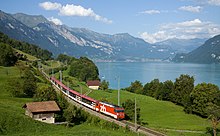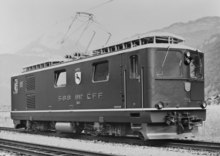Brünigbahn
| Brünigbahn | |||||||||||||||||||||||||||||||||||||||||||||||||||||||||||||||||||||||||||||||||||||||||||||||||||||||||||||||||||||||||||||||||||||||||||||||||||||||||||||||||||||||||||||||||||||||||||||||||||||||||||||
|---|---|---|---|---|---|---|---|---|---|---|---|---|---|---|---|---|---|---|---|---|---|---|---|---|---|---|---|---|---|---|---|---|---|---|---|---|---|---|---|---|---|---|---|---|---|---|---|---|---|---|---|---|---|---|---|---|---|---|---|---|---|---|---|---|---|---|---|---|---|---|---|---|---|---|---|---|---|---|---|---|---|---|---|---|---|---|---|---|---|---|---|---|---|---|---|---|---|---|---|---|---|---|---|---|---|---|---|---|---|---|---|---|---|---|---|---|---|---|---|---|---|---|---|---|---|---|---|---|---|---|---|---|---|---|---|---|---|---|---|---|---|---|---|---|---|---|---|---|---|---|---|---|---|---|---|---|---|---|---|---|---|---|---|---|---|---|---|---|---|---|---|---|---|---|---|---|---|---|---|---|---|---|---|---|---|---|---|---|---|---|---|---|---|---|---|---|---|---|---|---|---|---|---|---|---|
|
Brünigbahn near Meiringen
| |||||||||||||||||||||||||||||||||||||||||||||||||||||||||||||||||||||||||||||||||||||||||||||||||||||||||||||||||||||||||||||||||||||||||||||||||||||||||||||||||||||||||||||||||||||||||||||||||||||||||||||
| Timetable field : | 470, 472, (471) | ||||||||||||||||||||||||||||||||||||||||||||||||||||||||||||||||||||||||||||||||||||||||||||||||||||||||||||||||||||||||||||||||||||||||||||||||||||||||||||||||||||||||||||||||||||||||||||||||||||||||||||
| Route length: | 74.0 km | ||||||||||||||||||||||||||||||||||||||||||||||||||||||||||||||||||||||||||||||||||||||||||||||||||||||||||||||||||||||||||||||||||||||||||||||||||||||||||||||||||||||||||||||||||||||||||||||||||||||||||||
| Gauge : | 1000 mm ( meter gauge ) | ||||||||||||||||||||||||||||||||||||||||||||||||||||||||||||||||||||||||||||||||||||||||||||||||||||||||||||||||||||||||||||||||||||||||||||||||||||||||||||||||||||||||||||||||||||||||||||||||||||||||||||
| Power system : | 15 kV 16.7 Hz ~ | ||||||||||||||||||||||||||||||||||||||||||||||||||||||||||||||||||||||||||||||||||||||||||||||||||||||||||||||||||||||||||||||||||||||||||||||||||||||||||||||||||||||||||||||||||||||||||||||||||||||||||||
| Maximum slope : |
Adhesion 31 ‰ rack 128 ‰ |
||||||||||||||||||||||||||||||||||||||||||||||||||||||||||||||||||||||||||||||||||||||||||||||||||||||||||||||||||||||||||||||||||||||||||||||||||||||||||||||||||||||||||||||||||||||||||||||||||||||||||||
| Rack system : | Riggenbach | ||||||||||||||||||||||||||||||||||||||||||||||||||||||||||||||||||||||||||||||||||||||||||||||||||||||||||||||||||||||||||||||||||||||||||||||||||||||||||||||||||||||||||||||||||||||||||||||||||||||||||||
| Lucerne – Interlaken Ost | |||||||||||||||||||||||||||||||||||||||||||||||||||||||||||||||||||||||||||||||||||||||||||||||||||||||||||||||||||||||||||||||||||||||||||||||||||||||||||||||||||||||||||||||||||||||||||||||||||||||||||||
|
|||||||||||||||||||||||||||||||||||||||||||||||||||||||||||||||||||||||||||||||||||||||||||||||||||||||||||||||||||||||||||||||||||||||||||||||||||||||||||||||||||||||||||||||||||||||||||||||||||||||||||||
The Brünigbahn , built in 1888, is a narrow-gauge railway ( meter gauge ) that runs in Central Switzerland from Lucerne via Alpnachstad , Giswil , the Brünig Pass , Meiringen and Brienz to Interlaken Ost. The mountain route between Meiringen and Giswil is partially equipped with a rack ( Riggenbach system ). The railway line has belonged to the Zentralbahn since 2005 .
route
The section between Hergiswil and Lucerne is shared with the Lucerne-Stans-Engelberg line, which also belongs to the Zentralbahn. Alpnachstad is the starting point of the Pilatusbahn . The Meiringen-Innertkirchen-Bahn (MIB) begins at the Meiringen train station and has only been able to use it since the renovation that took place in 2010; previously the MIB station was on the other side of the street. In Brienz, next to the train station, is the starting point of the Brienz-Rothorn-Bahn (BRB). In Interlaken, the Brünigbahn operates a joint station with the Berner Oberland-Bahnen (BOB).
The Brünigbahn is part of the GoldenPass Line .
history
The Jura – Bern – Lucerne railway company (JBL) built the line and opened the section from Brienz over the Brünig Pass to Alpnachstad on June 14, 1888. Initially, there was only a connection to steamships on Lake Brienz and Lake Lucerne . On June 1, 1889, the Alpnachstad – Lucerne section was opened. On January 1, 1890, JBL became part of the Jura-Simplon Railway (JS). With the nationalization of the JS to the Swiss Federal Railways (SBB) on May 1, 1903, year-round operation was introduced. The line between Brienz and Interlaken Ost was opened on August 23, 1916. Until December 31, 2004, the railway was the only narrow-gauge line and the only rack railway in the SBB network. The last section between Brienz and Interlaken was only opened on August 23, 1916. On June 30, 2004 the Federal Council authorized SBB to sell the meter-gauge Brünigbahn to the Lucerne-Stans-Engelberg-Bahn (LSE). The LSE license was extended to the Brünig Railway. Since January 1, 2005, the merged railway company has been operating under the new name Zentralbahn .
During the Second World War, the line was electrified, from November 18, 1941 between Lucerne and Meiringen, and the rest of the line from December 24, 1942. Between 2000 and 2013, the line between Lucerne and shortly before Hergiswil Matt was expanded to double-track. The sections Kägiswil – Sarnen and the section Zollhaus up to shortly before Giswil have also been expanded to double lanes.
On August 22, 2005, the connection between Sarnen and Brienz was severely damaged by storms and several bridges were torn away. The damage totaled CHF 75 million.
A double track was built between Hergiswil- Schlüssel and Hergiswil-Matt from March to November 2019 and connected to the existing tracks in November 2019. The possibility of continuing the double-lane expansion from Hergiswil Matt to Hergiswil Dorf in a tunnel was provided.
Engineering structures
The longest tunnel section is the new section between Lucerne train station and Kriens-Mattenhof, which went into operation on November 12, 2012. The 1325 meter long Allmend tunnel with double lane replaces the longer above-ground entrance to Lucerne station with four level crossings. In addition, with the new underground station Lucerne Allmend / Messe (opening on December 9, 2012), the south of Lucerne with the Swissporarena and the exhibition center was better developed.
The Loppertunnel I with a length of 1186 meters crosses under the Lopper mountain . It has only had the addition of roman-one since 1964, after the LSE's LOPP tunnel II was opened. The two Lopper tunnel portals are next to each other on the Hergiswil side. A total of 13 tunnels were created during the construction of the line. A longer underpass was built between Lucerne and Hergiswil to expand the motorway. Here the line is double-lane.
The route has three bridges with a span of over 100 meters. Two bridges have special features: for example, the scheduled boats on Lake Brienz drive under the 167-meter-long Aare bridge near Interlaken. The notorious Hirscherengraben avalanche regularly passes under the steel truss bridge on Hirscherengraben near Oberried on Lake Brienz , which has repeatedly carried away the wooden road bridge underneath the railway bridge.
Infrastructure
The HG 3/3 cogwheel steam locomotives can only drive up the steep cogwheel sections with the smoke chamber. The historic, hand-operated turntable in Meiringen was dismantled in 2011, but was able to reopen in 2013 at a new location. The historic turntable in Giswil was also relocated and reopened in the course of the renovation of the station in 2013.
Rolling stock until 2004

(For rolling stock from 2005, see Zentralbahn )
- Steam locomotives (SBB numbers)
- G 3/3 101–110, the 109 has been preserved as an operational historical vehicle on the Blonay – Chamby (BC) museum railway
- G 3/4 201–208, the 208 has been preserved as an operational historical vehicle
- HG 2/2 1001-1013
- HG 3/3 1051-1068, the 1067 has been preserved as an operational historical vehicle, the 1068 as a monument locomotive
- Electric locomotives
- HGe 4/4 I 1991–1992 (1954) “Muni”; Number 1992 has been preserved as a working historical vehicle
- HGe 4/4 II 1951–1952 (1986), sold in 1990 to Furka-Oberalp-Bahn (FO)
-
HGe 101 961–968 (1989–1990)
- planned designation HGe 4/4 II 1961–1968
- Railcar
- SBB Fhe 4/6 , later Deh 4/6 901–916 (1941–1942), remaining vehicles from 1993 redesignated as Deh 120 006–012
-
De 110 000–004 (remodeling 1992–1993)
- converted from Deh 4/6 903, 906, 908, 910, 912
- De 110 005 (redrawn 1993)
- De 4/4 II 913 (conversion 1987), converted from Deh 4/6 913
- ABe 130 001-010 (2005)
- Stadler Spatz , delivered to Zentralbahn from the beginning of 2005
- Tractors and company vehicles
- Te I 198–199, electric shunting tractor 95 kW (Hergiswil and Alpnachdorf)
- Te III 201–203, electric shunting tractor 260 kW (Lucerne, Giswil and Meiringen)
- Tm II 596–598, 980–984, corresponds to the SBB Tm II diesel tractor , partially converted from standard gauge (980 + 984)
- Tm III 599 former diesel locomotive of the Südwestdeutsche Verkehrs-Aktiengesellschaft (SWEG V 2201), was needed during the station renovation in Lucerne, is now used for general construction work
- Tmh 985–986, cogwheel diesel tractor based on the Tm II, sold to the Furka Mountain Line Steam Railway.
- X red e 50, X red m 51, snow blowers
literature
- Wolfgang Finke: The vehicles of the Brünig Railway in over 1000 vehicle drawings. (A book on DVD). Tram-tv publishing house, Cologne 2010, ISBN 978-3-9813669-1-4
- Hans G. Wägli: Swiss rail network and Swiss rail profile CH +. AS Verlag , Zurich 2010, ISBN 978-3-909111-74-9 .
Web links
Individual evidence
- ↑ Swiss Rail Network , published by the SBB General Directorate 1980, page 31
- ↑ BBL 2004 3964 and http://www.zentralbahn.ch/
- ↑ Double-lane expansion Hergiswil , website of the construction department of Canton Nidwalden on the project, accessed on December 19, 2019
- ↑ The daily commuter of the Zentralbahn has returned. In: Obwaldner Zeitung, November 19, 2019
- ↑ Double-track expansion in Hergiswil on the Zentralbahn website, accessed on December 19, 2019
- ↑ Construction, Environment and Economic Department of the Canton of Lucerne: Double track and lowering in Lucerne: data and facts. (PDF) (No longer available online.) In: Expansion of the Zentralbahn. Formerly in the original ; Retrieved November 4, 2012 . ( Page no longer available , search in web archives )
- ^ Subscription Lucerne. In: Zentralbahn. Archived from the original on July 22, 2013 ; Retrieved November 4, 2012 .
- ↑ https://www.bernerzeitung.ch/region/Rettungsaktion-fuer--Drehscheibe-/story/16252513
- ↑ eisenbahn-magazin 4/2013, p. 27
- ↑ With steam into the modern age. In: Obwaldner Zeitung, June 10, 2013, with photo gallery
- ↑ Picture gallery of the BNB HGe 4/4 I (Muni) ( Memento of the original from June 10, 2012 in the Internet Archive ) Info: The archive link was inserted automatically and has not yet been checked. Please check the original and archive link according to the instructions and then remove this notice. on the website of the Brünig-Nostalgie-Bahn association





